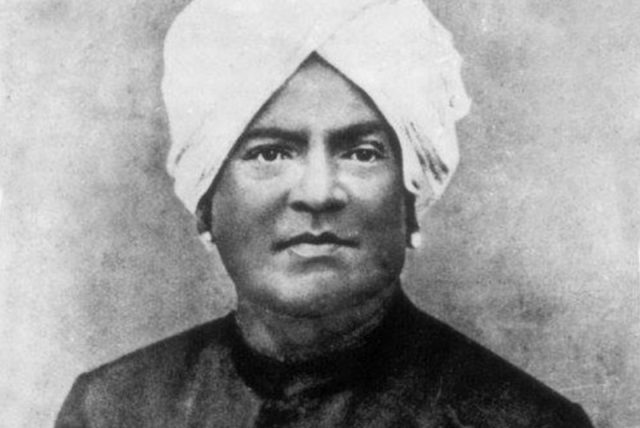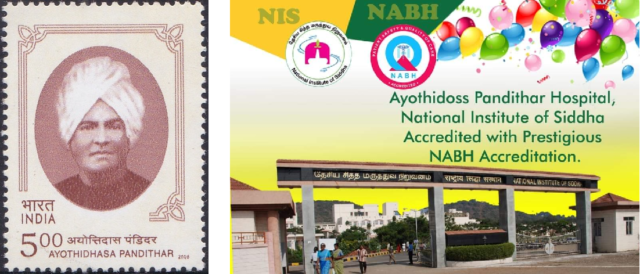PREVIOUS
Iyothee Thass
June 15 , 2019
2121 days
56931
0
- Iyothee Thass was a prominent Tamil Activist and anti-caste activist and a practitioner of Siddha medicine.

- Iyothee Thass tried to construct a unique political identity for the untouchables – such as Adi-Tamilar, Tamilan, Buddhist and so on.
Early life
- Born on 20 May 1845, Thass's original name was Kaathavarayan.
- He was born in Chennai's Thousand Lights area, and later migrated to Nilgiris district.
- He became an expert on Tamil literature, philosophy and indigenous medicine and could speak Tamil, English, Sanskrit and Pali.
His Activism
- After organising the tribal people in the Nilgris in the 1870s, he established the Advaidananda Sabha in 1876.
- He launched a magazine called Dravida Pandian along with Rev.John Rathinam in 1885.
- He issued a statement in 1886 announcing that the so-called untouchables are not Hindus.
- He also founded the Punchmar Mahajana Sabha in 1891 along with Rettaimalai Srinivasan.
- Punchamars are the one who does not come under Varna system. They are called as Avarnas.
- In 1881, when the colonial Government planned to carry out the second census, registration officials classified Depressed Classes as a new category within the Hindu religion.
- At the time, Iyothee Thass gave a memorandum to the British India Government requesting that the people of Depressed Classes in Tamil speaking land should be considered as Adi-Tamilar and not as Hindus.
- During the 1891 census also, he urged Dalits to register themselves as "casteless Dravidians" instead of identifying themselves as Hindus.
- This in fact makes Tamil Dalits the true descendants of the anti-Brahmin legacy which is today claimed by non-Brahmin non-Dalits.
- Iyothee Thass met Colonel H. S. Olcott, who was an American military officer and who founded the Theosophical Society, with his followers and expressed a sincere desire to convert to Buddhism.
- According to Thass, the Paraiyars of Tamilakam were originally Buddhists and owned the land which had later been robbed from them by Aryan invaders.
- He called upon the Paraiyars to do the same, arguing that this was their original religion.
- With Olcott's help, Thass was able to visit Ceylon and obtain diksha from the Sinhalese Buddhist monk Bikkhu Sumangala Nayake.
- On returning, Thass established the Sakya Buddhist Society in Madras with branches all over South India.
- The Sakya Buddhist Society was also known as the Indian Buddhist Association. and was established in the year 1898.
- On June 19, 1907, Iyothee Thass launched a Tamil newspaper called Oru Paisa Tamizhan or One Paise Tamilian.
- He succeeds in the getting the thousands of acres of lands and distributed among the landless poor under the scheme of “Panchami Lands”.
His ideologies
- He always stressed social transformation rather than political transformation.
- He dreamt to form a casteless society.
- He was regarded as a pioneer of the Dravidian Movement.
- He was the first modern Dalit social revolutionary.
- He remains the first recognized anti-Brahmin leader of the Madras Presidency.
- He called Dalits as Casteless Dravidians because they were outside the system of caste.
On Buddhism
- He was also the first notable Dalit leader to embrace Buddhism.
- He was the first Leader who had worked for the cause of revivalism of Buddhism in India.
- He asserted that Buddhism was the first anti-Brahmin movement in Indian history.
- He called on the untouchables to record their religion as Buddhism, which denounced the varna system.
- He termed the native inhabitants who followed Buddhism as Yatharththa Brahmana (Actual Brahmins).
- He came to the ideological conclusion that Tamil Buddhism was the right tradition to achieve this ideal.
- He wrote the history of India in the Inthirardesa Sarithiram, in which he argued that before the invasion of the Aryans, Indians were living peacefully without caste, following the doctrines of Buddhism.
- They had divisions like Brahmana, Vyshya, Kshatriya and Sudra but it was only a division based on labour and there was no graded status according to their profession.
- According to him, the uncivilized Aryans changed this mere division of labour into a caste division based on birth for their betterment.
- He tried half a century before Ambedkar to interpret history, religion and literature of the Tamils from the point of view of Buddhism which was once popular and prevalent in the south.
Later life
- Iyothee Thass died in 1914 at the age of 69.
- It is clear from the writings of Iyothee Thass that he considered the divisive and oppressive character of the caste system as antithetical to the spirit of nationalism.

- The institute for Siddha Research (National Institute of Siddha) at Tambaram, Chennai was inaugurated by the then Indian Prime Minister Manmohan Singh on 3 September 2005 and named it after the anti-caste Buddhist leader.
In TNPSC Exams
The Dravidian Mahajana Sabha was founded by (2015 Group I preliminary)
- Pundit Iyothee Thass
- CS Srinivasa Raghava Iyengar
- P Thiayagraya Chetty
- C Natesa Mudaliyar
- - - - - - - - - - - - - - -


